Habitat: Found in dense rain forests and plantations.
Length: Average 45 centimeters, maximum 75 centimeters.
Distribution: India, Burma, Malaya, Thailand, Laos, Cambodia, Vietnam, China, Indonesia, and Formosa.
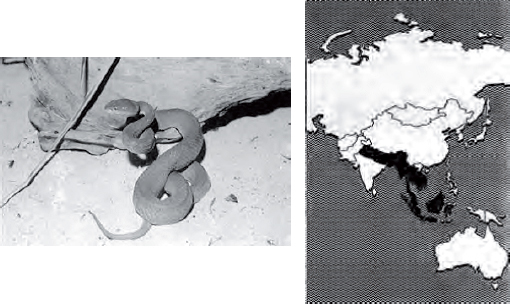
Habu pit viper
Trimeresurus flavoviridis
Description: Light brown or olive-yellow with black markings and a yellow or greenish-white belly.
Characteristics: This snake is responsible for biting many humans and its bite could be fatal. It is an irritable species ready to defend itself. Its venom is hemotoxic, causing pain and considerable tissue damage.
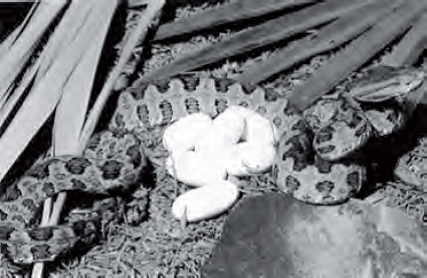
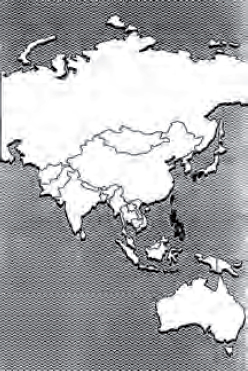
Habitat: Found in a variety of habitats, ranging from lowlands to mountainous regions. Often encountered in old houses and rock walls surroundings buildings.
Length: Average 1 meter, maximum 1.5 meters.
Distribution: Okinawa and neighboring islands and Kyushu.
Horned desert viper
Cerastes cerastes
Description: Pale buff color with obscure markings and a sharp spine (scale) over each eye.
Characteristics: As with all true vipers that live in the desert, it finds refuge by burrowing in the heat of the day, coming out at night to feed. It is difficult to detect when buried; therefore, many bites result from the snake being accidentally stepped on. Its venom is hemotoxic, causing severe damage to blood cells and tissue.
Habitat: Only found in very arid places within its range.
Length: Average 45 centimeters, maximum 75 centimeters.
Distribution: Arabian Peninsula, Africa, Iran, and Iraq.

King cobra
Ophiophagus hannah
Description: Uniformly olive, brown, or green with ringlike crossbands of black.
Characteristics: Although it is the largest venomous snake in the world and it has a disposition to go with this honor, it causes relatively few bites on humans. It appears to have a degree of intelligence. It avoids attacking another venomous snake for fear of being bitten. It feeds exclusively on harmless species. The female builds a nest then deposits her eggs. Lying close by, she guards the nest and is highly aggressive toward anything that closely approaches the nest. Its venom is a powerful neurotoxin. Without medical aid, death is certain for its victims.
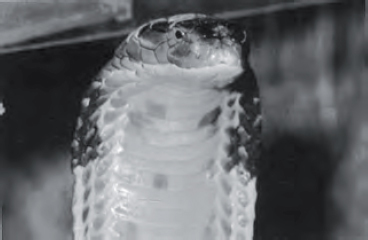
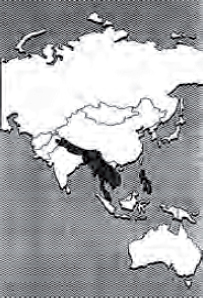
Habitat: Dense jungle and cultivated fields.
Length: Average 3.5 meters, maximum 5.5 meters.
Distribution: Thailand, southern China, Malaysia Peninsula, and Phillipines.
Krait
Bungarus caeruleus
Description: Black or bluish-black with white narrow crossbands and a narrow head.
Characteristics: Kraits are found only in Asia. This snake is of special concern to man. It is deadly – about 15 times more deadly than the common cobra. It is active at night and relatively passive during the day. The native people often step on kraits while walking through their habitats. The krait has a tendency to seek shelter in sleeping bags, boots, and tents. Its venom is a powerful neurotoxin that causes respiratory failure.
Habitat: Open fields, human settlements, and dense jungle.
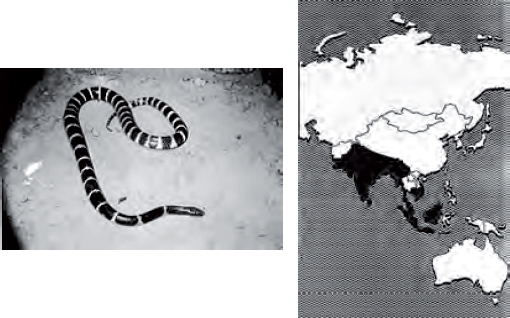
Length: Average 90 centimeters, maximum 1.5 meters.
Distribution: India, Sri Lanka, and Pakistan.
Levant viper
Vipera lebetina
Description: Gray to pale brown with large dark brown spots on the top of the black and a “ ^ “ mark on top of the head.
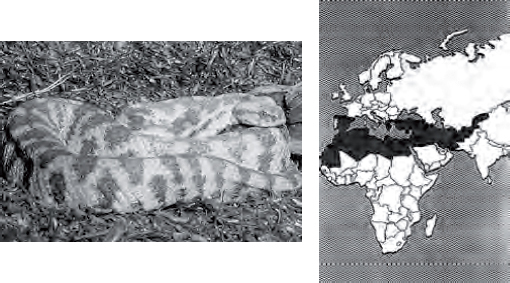
Characteristics: This viper belongs to a large group of true vipers. Like its cousins, it is large and dangerous. Its venom is hemotoxic. Many deaths have been reported from bites of this species. It is a strong snake with an irritable disposition; it hisses loudly when ready to strike.
Habitat: Varies greatly, from farmlands to mountainous areas.
Length: Average 1 meter, maximum 1.5 meters.
Distribution: Greece, Iraq, Syria, Lebanon, Turkey, Afganistan, lower portion of the former USSR, and Saudi Arabia.
Malayan pit viper
Callaselasma rhostoma
Description: Reddish running into pink tinge toward the belly with triangular-shaped, brown markings bordered with light-colored scales. The base of the triangular-shaped markings end at the midline. It has dark brown, arrow-shaped markings on the top and each side of its head.
Characteristics: This snake has long fangs, is ill-tempered, and is responsible for many bites. Its venom is hemotoxic, destroying blood cells and tissue, but a victim’s chances of survival are good with medical aid. This viper is a ground dweller that moves into many areas in search of food. The greatest danger is in stepping on the snake with bare feet.
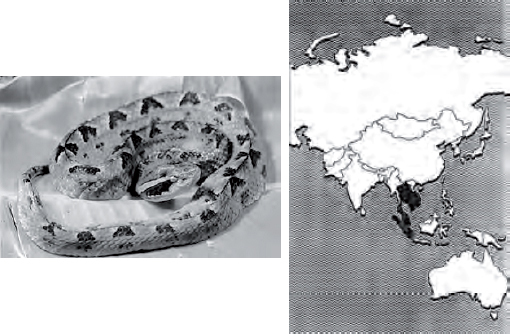
Habitat: Rubber plantations, farms, rural villages, and rain forests.
Length: Average 60 centimeters, maximum 1 meter.
Distribution: Thailand, Laos, Cambodia, Java, Sumatra, Malaysia, Vietnam, Burma, and China.
McMahon’s viper
Eristicophis macmahonii
Description: Sandy buff color dominates the body with darker brown spots on the side of the body. Its nose shield is broad, aiding in burrowing.
Characteristics: Very little is known about this species. It apparently is rare or seldom seen. This viper is very irritable; it hisses, coils, and strikes at any intruder that ventures too close. Its venom is highly hemotoxic, causing great pain and tissue damage.
Habitat: Arid or semidesert. It hides during the day’s sun, coming out only at night to feed on rodents.
Length: Average 45 centimeters, maximum 1 meter.
Distribution: West Pakistan and Afghanistan.
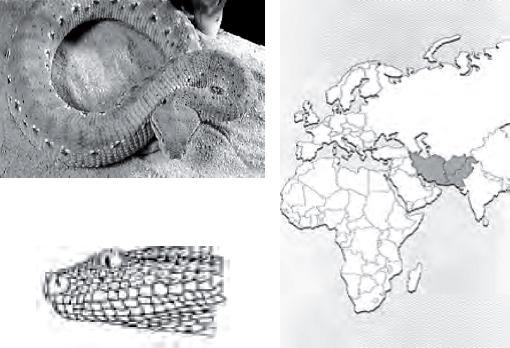
Mole viper or burrowing viper
Atracaspis microlepidota
Description: Uniformly black or dark brown with a small, narrow head.
Characteristics: A viper that does not look like one. It is small in size, and its small head does not indicate the presence of venom glands. It has a rather inoffensive disposition; however, it will quickly turn and bite if restrained or touched. Its venom is a potent hemotoxin for such a small snake. Its fangs are exceptionally long. A bite can result even when picking it up behind the head. It is best to leave this snake alone.
Habitat: Agricultural areas and arid localities
Length: Average 55 centimeters, maximum 75 centimeters
Distribution: Sudan, Ethiopia, Somaliland, Kenya, Tanganyika, Uganda, Cameroon, Niger, Congo, and Urundi.
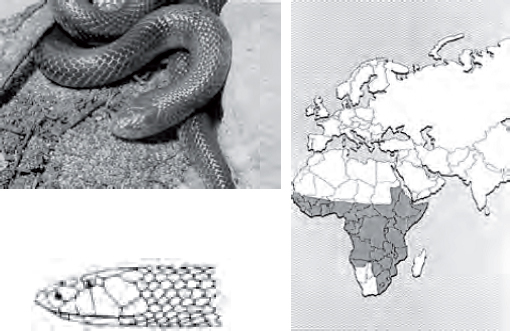
Palestinian viper